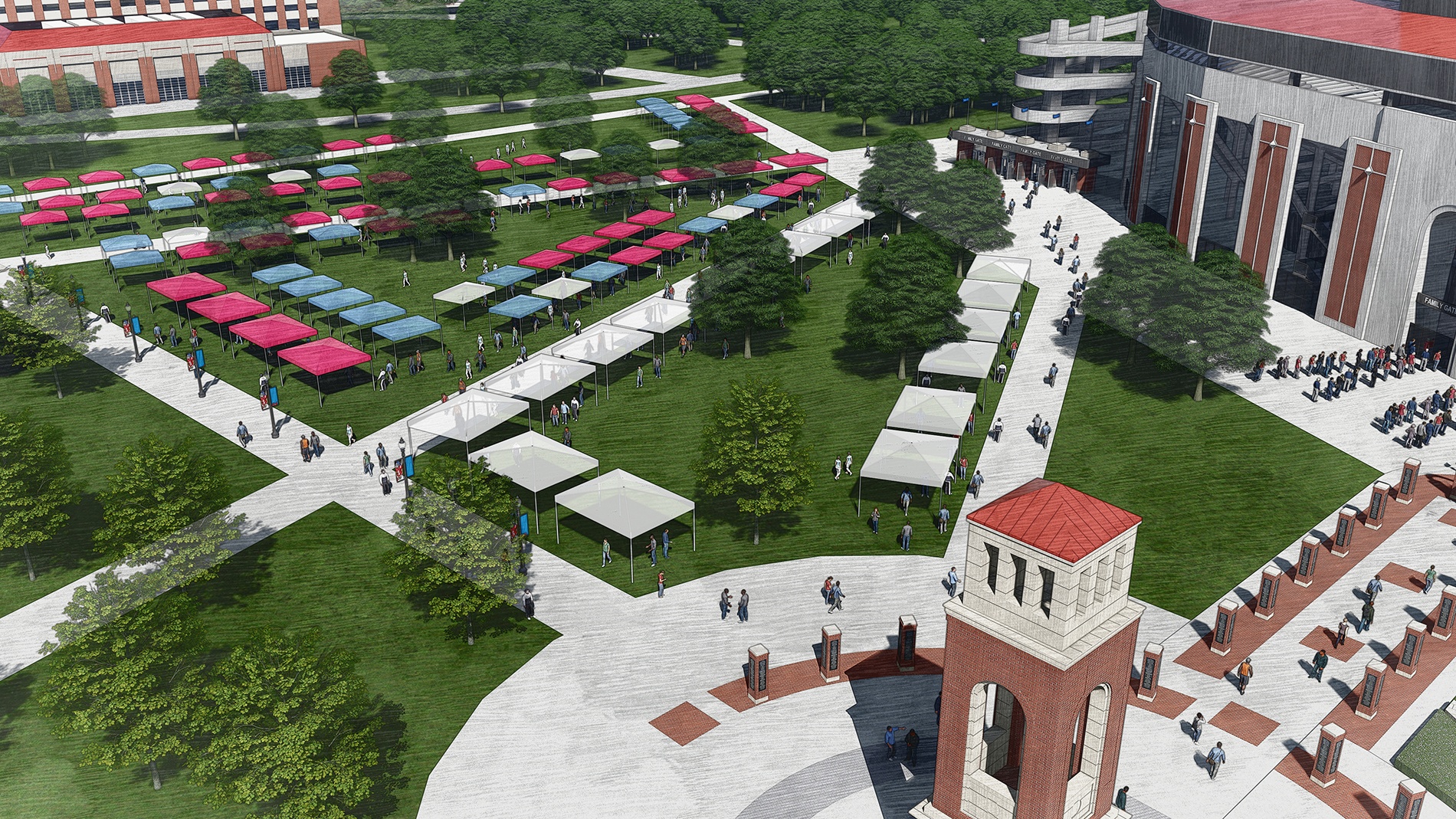Sports Business Journal’s research tells us that about $1.4 billion in college stadium construction will finish in 2022, with another $1.87 still in the works. Universities are updating outdated stadiums in response to the demands of today’s fans for more comfortable, diverse and amenity-rich experiences. The game itself is no longer the only attraction.
Enhancing Premium Seating Options
HOK’s design for the reimagined south end zone of Camp Randall Stadium places fans closer to the action with a wide variety of new and primarily open-air premium seat options that enable fans to feed off the game energy. The stadium was already one of the best atmospheres in college football. The University’s vision for this project enabled HOK’s team to lift the experience to new heights.
Streamlining Concessions
One question weighing on the minds of all our clients is how to streamline concessions for spectators in non-premium seating areas, i.e., most fans. A shortage of foodservice workers, combined with contact-free trends spawned by COVID-19, is sparking imaginative solutions upping the foodservice game. These include:
- Cashless concessions.
- Grab-and-go concession stand markets instead of traditional belly-up concession stands. These stands can feature freshly prepared items packaged in the space or pre-packaged items prepared remotely. This approach gives fans control of their experience, allowing them to select items rather than waiting in line to order at a counter. Payment stations at the exit can be operated by staff or offer self-checkout or frictionless checkout options similar to the model made popular by Amazon Go stores.
- Remote ordering and consumer pickup. Universities are using point of sale (POS) technology to allow fans to order via apps on their mobile devices. Food is then picked up by consumers or placed in food lockers to minimize wait times. This change is in response to labor shortages that have made it more challenging to provide in-seat service.
- Remote-controlled robots that sell products from tap-to-pay containers.
We work with foodservice consultants like S20 to understand how these changes affect space planning. Grab-and-go markets, for example, require different space allocations. Because fans queue inside the space instead of outside, we can recapture concourse space previously allocated for queue lines and absorb it into market or grab-and-go locations.
Integrating the Tailgating Experience
Every college football fan knows about the unique tailgating at The Grove at Ole Miss. Fans in this tree-covered, 10-acre plot in the heart of the University of Mississippi campus experience what The Sporting News called “the Holy Grail of tailgating sites.” Before every home game, the players enter the quad and pass through a “Walk of Champions” arch on The Grove’s east side that leads to an avenue into the stadium. Fans lined up along a controlled barrier have opportunities to interact with the players as they head into the venue.

Rendering of a proposed reimagination of The Grove, a tailgating area at the heart of the University of Mississippi’s campus
Our team is working with the University’s athletics department, planning and architectural groups to reimagine the west side of Vaught-Hemingway Stadium. The project will pull The Grove’s dynamic tailgating experience toward the venue. Our plan calls for replacing some current structures along this route with premium, full-service tailgating space supported by third-party vendors like REVELxp, which will provide the tent, tables, chairs, TVs and catering. No setup or breakdown is required for the fans.
Incentivizing Students
We’ve known for a long time that these venues need to be elevated to compete with flat-screen TVs at fans’ homes. That trend has now reached students, who often want and deserve more than just sitting and sweating in the sun in a bleacher seat for four hours.
At the University of Alabama’s Bryant-Denny Stadium in Tuscaloosa, a proposed student seating section beneath the stadium’s lower bowls would incentivize students to attend the games. There are more comfortable, shaded seats. An area with music, a DJ and alcohol for the over-21 population creates a more festive game-day ambience.
HOK’s Current and Recent College Football Projects
- University of Wisconsin Camp Randall Stadium South End Zone project (completed before 2022 season)
- University of Georgia Sanford Stadium Modernization (2018, 2022)
- University of Georgia Butts-Mehre Heritage Hall Training Facility (2022)
- Southern Methodist University (SMU) Training Complex in South End Zone of Gerald R. Ford Stadium (complete in 2024)
- University of Florida Football Training Center (completed before 2022 season)
- University of South Florida Football Training Center (complete in 2022)
- University of Mississippi Vaught-Hemingway Stadium West Side
- University of Alabama Bryant-Denny Stadium Renovations
Interested in learning more about the latest trends shaping collegiate football stadiums? Check out our Collegiate Sports project work.